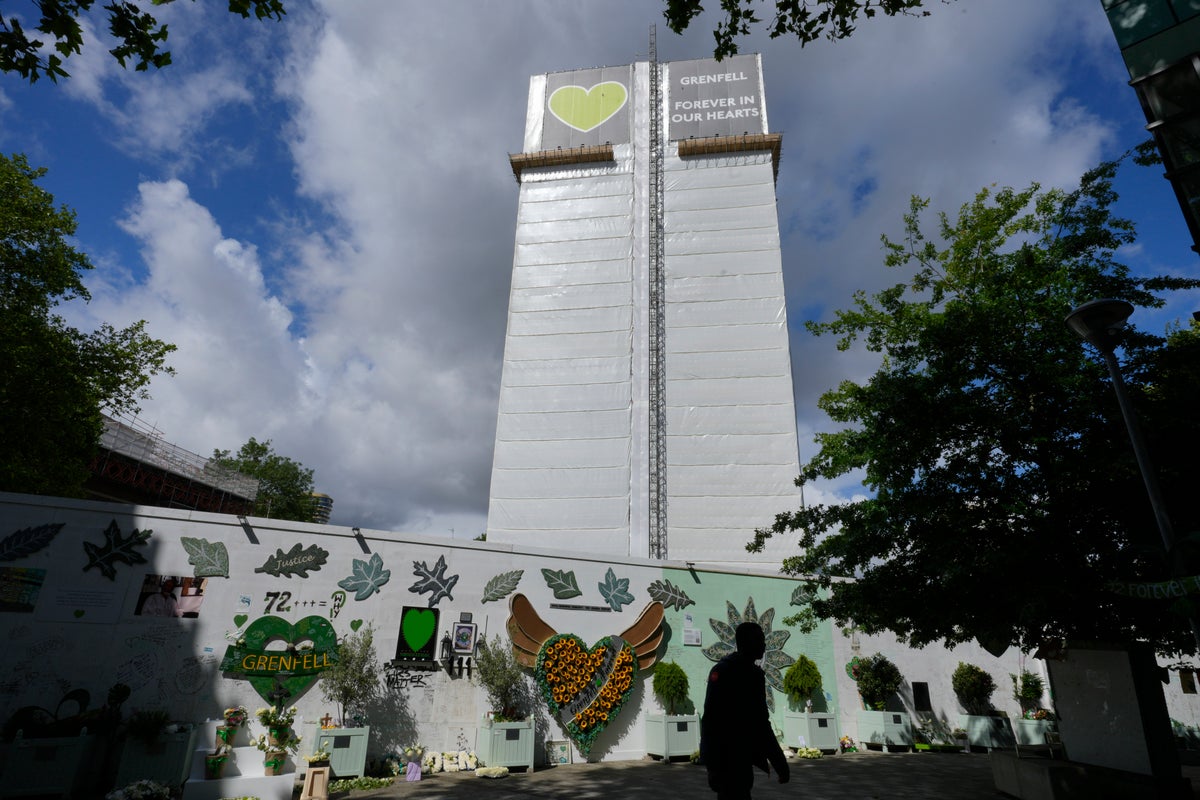
Your support helps us to tell the story
From reproductive rights to climate change to Big Tech, The Independent is on the ground when the story is developing. Whether it’s investigating the financials of Elon Musk’s pro-Trump PAC or producing our latest documentary, ‘The A Word’, which shines a light on the American women fighting for reproductive rights, we know how important it is to parse out the facts from the messaging.
At such a critical moment in US history, we need reporters on the ground. Your donation allows us to keep sending journalists to speak to both sides of the story.
The Independent is trusted by Americans across the entire political spectrum. And unlike many other quality news outlets, we choose not to lock Americans out of our reporting and analysis with paywalls. We believe quality journalism should be available to everyone, paid for by those who can afford it.
Your support makes all the difference.
More than seven years after the Grenfell Tower fire took the lives of 72 people, the blackened remains of the block have been marked for demolition. Survivors and families have not secured justice – and thousands of residents still live in buildings wrapped in unsafe cladding.
Given that the horrific fire – which burned for 60 hours – was the worst such tragedy since the Blitz, the lethargy that seems to have doomed the official response is distressing and unforgivable.
Now, the fate of the building itself has been settled, though the decision to “deconstruct” it “carefully” over a process of around two years remains controversial.
Because of the circumstances of their deaths, Grenfell Tower is a kind of crime scene and a grave – and any interference with it is bound to cause pain to at least some of the victims. Some claim that the minister responsible, Angela Rayner, hasn’t consulted widely enough those most closely affected.
Others, such as the Next of Kin group, have been more sympathetic to the dilemma she faces. What is broadly agreed is that the 24-storey structure – more than half a century old and so badly damaged in the inferno – is unsafe and cannot be literally propped up by 6,000 struts indefinitely. Its very condition forces a decision. Partial demolition is inevitable.
The concern, again entirely understandable, is that if the tower disappears completely, then there will never be justice and emotional closure – “if it’s out of sight, it will definitely be out of mind”, as one former resident puts it. So there is a case, in principle, for the lower floors of the building to be preserved as a striking and permanent memory of lost lives and a standing indictment of the callous behaviour of those responsible for the disaster.
Realistically, Ms Rayner’s decision rules it out. As she suggests, it is not possible to satisfy all those affected: “Being able to see the tower every day helps some people continue to feel close to those they lost. For others, it is a painful reminder of what happened and is having a daily impact on some members of the community.”
The Grenfell Memorial Commission has shortlisted five teams of architects to design a fitting tribute. The bereaved families, survivors and the community are in charge of making the selection. The garden and museum at the 9/11 Ground Zero site in New York is an inspiring example of what can be achieved. The Memorial Commission promises to create an area of great sanctity, designed to be a “peaceful place for remembering and reflecting”.
The most fitting memorial to the Grenfell Tower disaster would be to see justice done properly. The families have waited an intolerably long time already. The inquiry has all but completed its work – soon, many previously unseen documents will be published.
The final report of the Grenfell Tower Inquiry, published last September, concluded the disaster was the result of “decades of failure” by central and local government and the construction industry to act on the dangers of flammable materials on these high-rise buildings. The inquiry chairman, Sir Martin Moore-Bick, identified “systematic dishonesty” in the firms that made and sold the cladding that contributed to the ferocity of the fire and the speed of its spread.
The police and public prosecutors should waste no more time in bringing criminal charges against any architects, builders, property managers, councillors, borough officials and emergency services personnel whose actions or negligence caused so much human misery.
Ms Rayner, as deputy prime minister, should push forward in this as hard as possible, as well as continuing the urgent remedial work on residential tower blocks across the country – and keeping the Grenfell families at the heart of her decisions. It is the least the survivors and the bereaved deserve.

